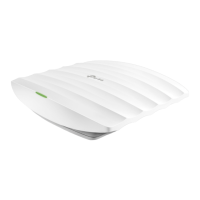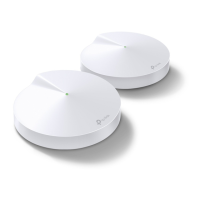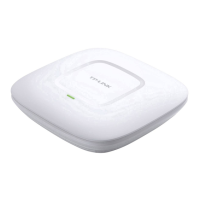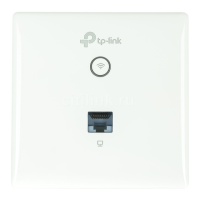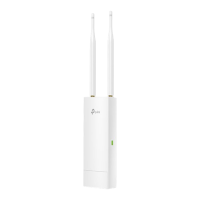Do you have a question about the TP-Link AP200 and is the answer not in the manual?
Helps users select the most suitable operating mode for their network needs based on usage scenarios.
Illustrates and explains how to physically connect the AP device for various operation modes.
Details the procedure for accessing and logging into the AP device's web-based management interface.
Guides users through a step-by-step wizard to quickly configure the AP device's wireless network.
Covers manual configuration of wireless network name (SSID), security, and other advanced parameters.
Guides users on modifying the AP device's IP address, subnet mask, and default gateway.
Details configuring the DHCP server, IP address pools, and managing DHCP clients for network addressing.
Enables setting up blacklists or whitelists to manage device access to the network and Internet.
Helps users select the most suitable operating mode for their network needs based on usage scenarios.
Illustrates and explains how to physically connect the AP device for various operation modes.
Details the procedure for accessing and logging into the AP device's web-based management interface.
Guides users through a step-by-step wizard to quickly configure the AP device's wireless network.
Covers manual configuration of wireless network name (SSID), security, and other advanced parameters.
Guides users on modifying the AP device's IP address, subnet mask, and default gateway.
Details configuring the DHCP server, IP address pools, and managing DHCP clients for network addressing.
Enables setting up blacklists or whitelists to manage device access to the network and Internet.
| 2.4 GHz | Yes |
|---|---|
| Networking standards | IEEE 802.11a, IEEE 802.11ac, IEEE 802.11b, IEEE 802.11g, IEEE 802.11n, IEEE 802.3, IEEE 802.3ab, IEEE 802.3af, IEEE 802.3u |
| Receiver sensitivity | 2.4GHz: 11g 54M: -76dBm@10% PER 11n HT20 MCS7: -73.5dBm@10% PER 11n HT40 MCS7: -71dBm@10% PER 5GHz: 11a 6Mbps:-93dBm@10% PER 11a 54Mbps: -75dBm@10% PER 11ac HT20 MCS8: -67dBm@10% PER 11ac HT40 MCS9: -62.5dBm@10% PER 11ac HT80 MCS9: -59.5dBm@10% PER |
| Ethernet LAN data rates | 10, 100, 1000 Mbit/s |
| Maximum data transfer rate | 750 Mbit/s |
| Maximum data transfer rate (5 GHz) | 433 Mbit/s |
| Maximum data transfer rate (2.4 GHz) | 300 Mbit/s |
| Output current | 1 A |
| Output voltage | 12 V |
| Antenna type | External |
| Antenna features | Detachable antenna |
| Antennas quantity | 2 |
| Internal | No |
| Placement | Table |
| Certification | CE, FCC, RoHS |
| Product color | Black |
| Cables included | LAN (RJ-45) |
| Security algorithms | 64-bit WEP, 128-bit WEP, WPA-PSK, WPA2-PSK, WPS |
| Compatible operating systems | Microsoft Windows 98SE, NT, 2000, XP, Vista, Windows 7, 8, 8.1, 10, Mac OS, NetWare, UNIX, Linux |
| Operating altitude | 5 - 90 m |
| Storage temperature (T-T) | -40 - 70 °C |
| Operating temperature (T-T) | 0 - 40 °C |
| Storage relative humidity (H-H) | 10 - 90 % |
| USB 2.0 ports quantity | 0 |
| Ethernet LAN (RJ-45) ports | 1 |
| Depth | 162 mm |
|---|---|
| Width | 242 mm |
| Height | 44 mm |
